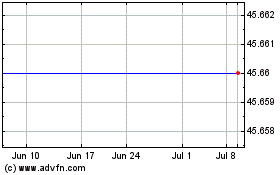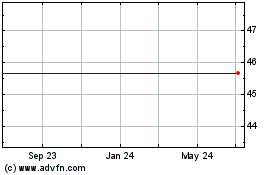By Sarah Kent and Georgi Kantchev
The growing clout of state-backed Chinese oil traders is raising
concerns over their influence on the price of crude as trade
increasingly flows into markets with little regulatory
oversight.
Last August, Chinaoil, the trading arm of China National
Petroleum Corp., swept up around 90% of the crude then available in
the Dubai market, which sets the price of the Middle East's most
important benchmark. That pushed up the price of oil by hundreds of
millions of dollars for dozens of Asian refiners, according to
industry executives.
While this and several other trades have roiled oil markets,
they appear to have attracted no regulatory scrutiny. That is
stoking concern that Chinese traders are causing swings in Middle
Eastern oil markets that distort prices. And nobody is
watching.
"The [August] Chinese play would be a fiery red flag for me,"
said Bart Chilton, a former commissioner with the U.S. Commodity
Futures Trading Commission. "Anytime you have a significant
concentration in a market in the hands of one player, that should
be a concern for regulators."
Chinaoil has bought up more than half the crude being sold in
the Dubai market in 10 of the 25 months since January 2014,
according to an analysis by The Wall Street Journal of data from
Platts, the energy information provider that runs the benchmark. A
unit of China Petroleum & Chemical Corp, or Sinopec, sold more
than half the oil put on the market in seven of the months since
then.
In comparison, the largest position that any one party has
traded in Brent, the international benchmark, since January 2014
has been 30%.
China's influence over the global oil market has increased in
tandem with its growing demand for crude. The Asian giant now
consumes about 12% of the world's oil--second to the U.S.--and the
trading arms of its state-owned oil companies are becoming
increasingly aggressive in the amount they are buying or
selling.
This increased muscle is most apparent in the Dubai benchmark--a
crucial pricing mechanism for millions of barrels of Middle Eastern
oil sold into Asia.
Motives behind the large trades remain unclear, but the
potential impact of big players dominating unregulated markets
isn't, market participants say.
Sinopec declined to comment on its trading activities, but said
it operates in "compliance with relevant laws and regulations, and
in accordance with the company's overall strategy and business
needs."
CNPC didn't respond to requests for comment.
China's Ministry of Commerce and the China Securities Regulatory
Commission didn't immediately respond to request for comment.
In August, Chinaoil swept up almost 37 million barrels in the
price-setting mechanism, or enough oil to cover two weeks of demand
in Germany. That helped push the price of Dubai crude above
Brent--a better quality crude that normally trades at a premium to
the Middle Eastern benchmark.
Industry executives struggle to think of another time when one
buyer has built such a sizable oil position in a single market. The
last time a trade came close was in January 1988, when trader
Transworld Oil bought up most of the crude available in the Brent
market--around 25 million barrels.
The August trades made oil more expensive for buyers like Balraj
Kishor Namdeo, director of the refinery business of Indian
state-owned oil and natural gas company Hindustan Petroleum Corp
Ltd.
"The Chinese were buying left and right and that was not good
for us," Mr. Namdeo said. "Regulators should be concerned about
this--one trader cannot be allowed to distort the balance of the
market."
Such trades are attracting increasing complaints.
In December, Mike Muller, the head of trading at Royal Dutch
Shell said in a rare public statement that safeguards were needed
"to prevent the risk of distortion" of the Dubai market.
Large Middle Eastern producers who price their oil off this
market have raised concerns with Platts, according to people
familiar with the matter. A spokesman for Platts, a unit of McGraw
Hill, said that it entered "a formal consultation with participants
about the evolution" of the Dubai benchmark in September.
To be sure, trade in physical crude has long had a reputation
for being unregulated compared to financial markets.
Trading in oil futures takes place on exchanges like London's
ICE Futures Europe or the New York Mercantile Exchange, and come
under the oversight of watchdogs like the CFTC and Britain's
Financial Conduct Authority. But physical oil isn't subject to the
same level of scrutiny.
U.S. regulators have in the past used their jurisdiction over
oil futures to crack down on physical markets. In 2014, the CFTC
reached a $13 million settlement with a group of trading houses
accused of manipulating oil supplies in 2008 to influence the price
of derivatives tied to U.S. crude.
Later this year, the European Union will introduce market abuse
legislation that will extend regulators' oversight of physical oil
markets.
But as a larger share of global crude trading moves east,
European and U.S. regulators will find it even harder to oversee
the oil market. That's important because major western oil
companies use markets like Dubai, while derivatives traded from
London to New York are referenced off oil priced there.
In January, Platts, increased the number of grades of oil used
to calculate the Dubai benchmark, in a move analysts say will
increase the volume traded, making it less susceptible to dominance
by one player. But Chinaoil still bought up almost every cargo sold
that month, or nearly 9 million barrels of crude.
Platts says it is not a market regulator and isn't in a position
to limit how much each trader buys or sells.
"I think it's a little odd frankly that the oil market looks to
China to be one of the top three deliverers of economic and demand
growth every year and yet somehow is surprised when China becomes
more and more a force in the benchmarks," said David Ernsberger,
the global head of oil content at Platts.
Brian Spegele contributed to this article.
Write to Sarah Kent at sarah.kent@wsj.com and Georgi Kantchev at
georgi.kantchev@wsj.com
(END) Dow Jones Newswires
February 23, 2016 10:48 ET (15:48 GMT)
Copyright (c) 2016 Dow Jones & Company, Inc.
China Petroleum and Chem... (NYSE:SNP)
Historical Stock Chart
From Mar 2024 to Apr 2024

China Petroleum and Chem... (NYSE:SNP)
Historical Stock Chart
From Apr 2023 to Apr 2024
